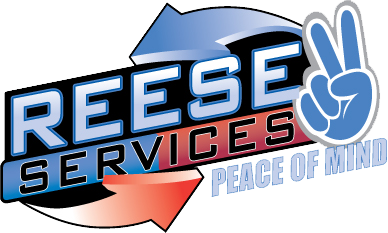At Reese Services, we consider the design plan and materials, your budget, and the intended applications to find the right processes for your project. These processes may include any one of several varieties of welding and fabrication services depending on your project’s unique considerations. Our broad range of capabilities enable our team to provide metal fabrication for projects of all shapes and sizes.
Welding is used in almost every industry to create parts, structural components, and equipment. Construction, automotive, and aerospace industries frequently turn to welding professionals to construct everything from large-scale pieces to intricate assemblies. Welding is even becoming a popular technique for making artwork.
Fabrication is the broad term for the industrial processes that take raw or partially finished materials and turn them into finished parts. Metal fabrication, specifically, refers to manufacturing processes that shape sheet metal and other forms of metal into products.
Welding is a commonly used technique in metal fabrication to create products such as pipe fittings, window frames, automotive parts, tools, and more. Professionals use welding throughout commercial fabrication, industrial fabrication, and structural fabrication processes. The broad stages of metal manufacturing are:
Part Design: Metal fabricators create plans to fulfill specifications, run virtual tests, and plan stages and processes of production.
Part Fabrication: Manufacturers shape raw or sheet metal to bring the design to life. This stage can incorporate several manufacturing, machining, and joining processes.
Part Finishing: The metal part might be deburred, hardened, painted, treated, or assembled to make it ready for packaging or shipping.
Types of Welding & Fabrication
Welding
Welding processes combine two separate pieces of metals, thermoplastics, or wood to create a cohesive piece. There are numerous types of welding and fabrication, each of which works best with different materials or in different circumstances. It’s a permanent fastening process that uses a combination of heat and pressure along with a consumable material, or filler, to join two pieces together. Popular options for consumables include filler wire, consumable electrodes, and materials that are similar to the parent materials. Some methods of welding use filler wire to join the two parent parts, while others use an electrode and gases to generate heat.
MIG Welding
There are two different types of MIG welding. One uses bare wire as a filler, which joins thin metal parts together. The other uses a flux core to join the parent parts. Because it doesn’t require a constant connection, this MIG welding process is popular for outdoor applications. MIG welding is also called Gas Metal Arc Welding (GMAW).
Stick Welding
Stick welding, or arc welding, uses an electrode welding rod to join two parts together. It works on dirty materials, cast iron, and materials in adverse environmental conditions. Because of the thickness of the weld, it’s regarded as one of the strongest welds. However, the parent materials also play a role in determining the overall strength of a weld.
Fabrication
Fabrication is a broad category of different processes and stages of production. Some of the subcategories involved in fabrication include the following:
Cutting
Cutting divides metal workpieces into smaller pieces. It involves techniques such as plasma cutting, waterjet cutting, laser cutting, and cutting with mechanical tools. Metal fabricators can cut metal sheets or bars. They select the right cutting methods based on the materials’ resistance to mechanical, water, and heat damage, as well as the intricacy of the design.
Machining
Like cutting, machining cuts through the metal to split it into pieces. However, machining processes are used to refine a workpiece by removing excess material, which is then thrown out as scrap or reused. Common machining processes include drilling holes, turning to produce a smoothed shape, and milling to cut away excess material at multiple points.
